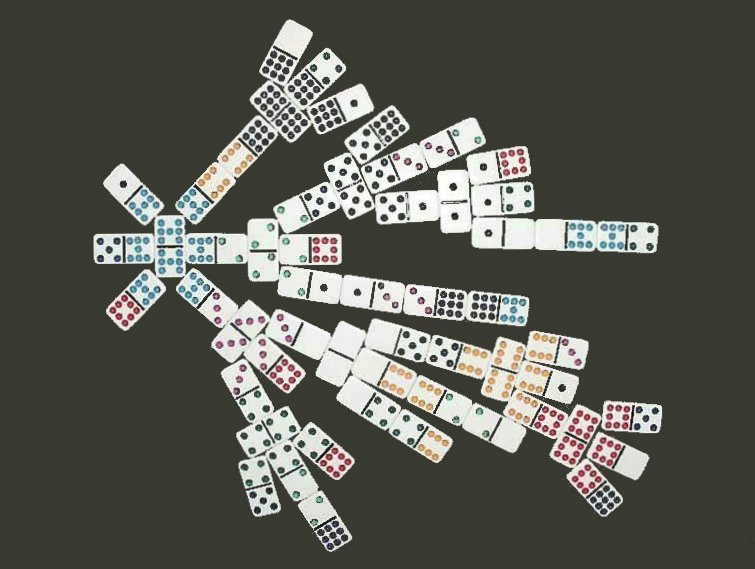
When a double is played, it is placed perpendicular to the train. the double played at the beginning of the round) or add to the train. They can start the train by playing a domino matching the engine (i.e. The Mexican train is an additional train that anyone may play on during their turn. Players have the option, whether they can play on their own train or not, of playing a domino on any train currently marked "public." When a player with a "public" train adds a domino to it, it becomes "private" again and may not be played on except by the train's owner. If a player is deemed to have made a strategic error the highest score of that round is added to theirs. When a player plays a domino on their train it then becomes "private." When a player draws a domino and is unable to play it, they must mark their train as "public" by placing a marker on their train. It is acceptable to "bend" the train 90° or 180° to keep the train on the playing surface, as long as it does not interfere with the endpoints of other trains.Īll trains begin the game as "public", and all players may play on them. As a result, trains can become quite long, especially with an extended domino set. Ī train can be as long as the players can make it it ends only when all dominoes that could match its endpoint have already been played. Otherwise, their turn is over and play continues to the left, each player trying to place all their dominoes by playing matching dominoes one at a time, end to end. If they are able to lay that domino, they must do so immediately. If they are unable to, they must draw a domino from the boneyard. Each person lays one legally placed domino per turn, or two if the player's first domino is a double. In each successive round the next lower double is used until all doubles are used. With a standard double-twelve set the double twelve is placed in the station. Using the double-twelve set, players draw dominoes as follows:Īny remaining dominoes are placed to one side, forming the " boneyard". The middle tile counts as the start of a player's multiple tile train.Īt the start of each round, the dominoes are placed face-side down, shuffled, and drawn by players to form their hands. Dominoes may be placed onto the player's train, onto the Mexican train if available, or on the trains of other players under special circumstances. The object of all trains games is to be the first player to place all of their dominoes. However, the station piece is not strictly needed, and anything from coins to poker chips to even pieces of candy or slips of paper can be used as markers. Many sets of dominoes include a station and special train-shaped tokens for markers, and packaged games with a central "station" and custom tokens are available. A special spacer, known as the "station" or "hub", used to evenly space the trains around the central domino (optional).In addition to dominoes, the game also requires: The following sets are common, depending on the number of people playing:

It is related to the game Chicken Foot.Ī double-twelve set of dominoes is marketed as the standard for Mexican Train, and accommodates up to eight players But there are many sets that are commonly used.



However, the game can be played without the Mexican train such variants are generally called "private trains" or "domino trains". The game's most popular name comes from a special optional train that belongs to all players. The object of the game is for a player to play all the tiles from his or her hand onto one or more chains, or trains, emanating from a central hub or "station". Mexican Train is a game played with dominoes. A typical game of Mexican Train with the branching doubles variation For Mexican trains in general, see Rail transport in Mexico.


 0 kommentar(er)
0 kommentar(er)
